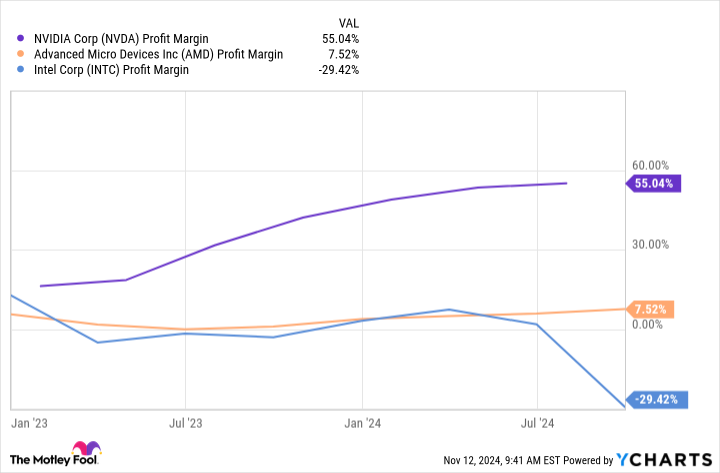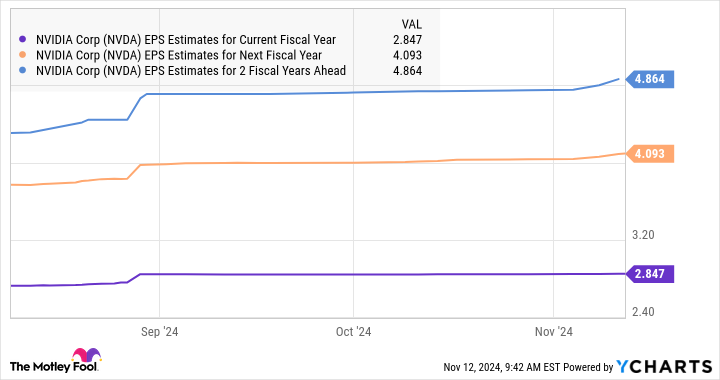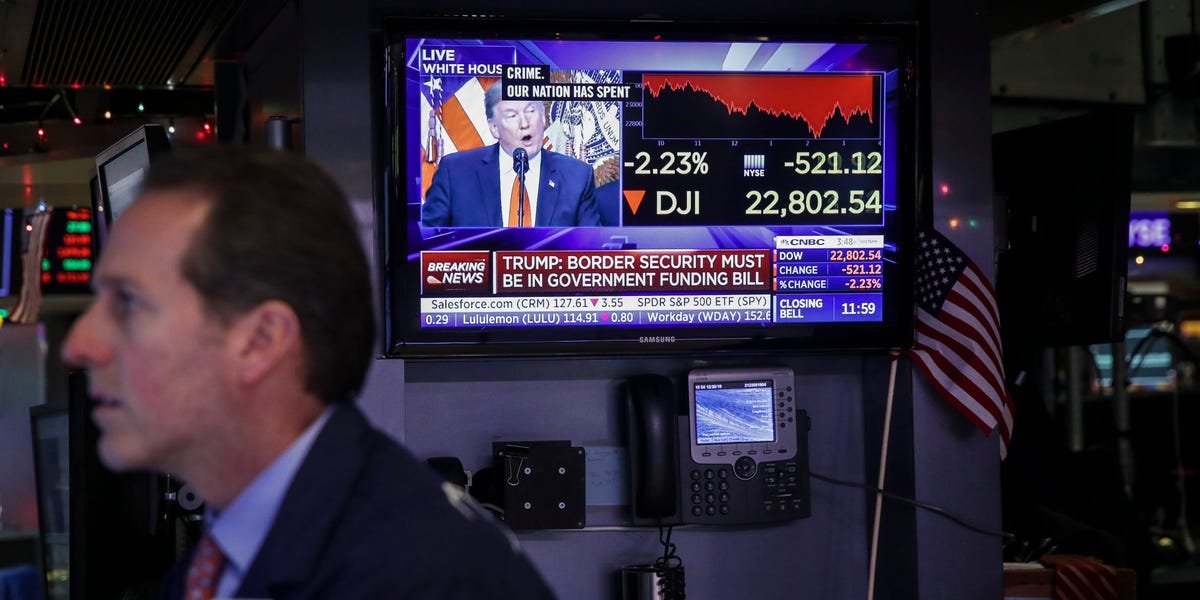Nvidia (NVDA -4.13%) recently overtook Apple to become the world’s largest company in terms of market cap. The chipmaker’s rise to the top position is justified thanks to the impressive growth it delivers quarter after quarter on the back of the robust demand for its chip systems, which are playing a central role in the proliferation of artificial intelligence (AI).
The semiconductor giant has a market cap of roughly $3.6 trillion as of this writing. The good part is that consensus estimates are expecting Nvidia’s business to keep growing at a terrific pace, with its earnings expected to grow at an annual rate of 57% over the next five years. Will Nvidia be able to live up to such ambitious growth estimates and hit a $5 trillion valuation by 2028?
Nvidia’s pricing power is going to be a big tailwind for the company
Though Nvidia is a hardware company, it has seen a stunning increase in its profit margin since the beginning of 2023. In fact, Nvidia’s profit margin is significantly higher than its rivals Advanced Micro Devices and Intel.
NVDA Profit Margin data by YCharts
The company’s impressive profitability can be attributed to the pricing power it enjoys in the market for AI graphics processing units (GPUs), thanks to its dominant market share of as much as 95%. According to a report by Citi earlier this year, Nvidia was reportedly charging 4 times the price for its extremely popular H100 AI GPUs compared to AMD’s competing MI300X AI accelerator.
More specifically, Nvidia was charging somewhere between $30,000 and $40,000 for the H100 when AMD was offering its MI300X for $10,000 to $15,000. A big reason why Nvidia has been able to charge such a massive premium is because of the immense demand for the H100, the waiting period for which extended to as long as eight to 11 months before coming down to three to four months earlier this year.
This reduction in waiting time can be attributed to an increase in the advanced chip packaging capacity by Nvidia’s foundry partner, Taiwan Semiconductor Manufacturing, popularly known as TSMC. Market research firm TrendForce reported earlier this year that Nvidia accounted for 40% to 50% of TSMC’s advanced packaging capacity.
However, there is a good chance of Nvidia controlling a bigger portion of the supply chain as the chipmaker reported $26.3 billion in data center revenue in the previous quarter (the second quarter of fiscal year 2025, ended July 28, 2024), which is way higher than AMD’s $3.5 billion revenue from its data center segment in the third quarter of 2024. This suggests that TSMC may be allocating more capacity to Nvidia than the 40% to 50% estimated by TrendForce.
What’s more, AMD’s data center GPU revenue guidance for 2024 is nowhere close to the figure that Nvidia could generate from this segment. In simpler words, Nvidia’s big share of TSMC’s production capacity and the strong demand for its AI GPUs position the company to command a higher price and generate impressive levels of data center revenue.
Another reason why customers are willing to pay a higher price for Nvidia’s AI chips is because of a better price-to-performance ratio. For instance, Nvidia’s latest Hopper flagship processor — the H200 — reportedly outperforms AMD’s MI300X by more than 40% in AI inference tasks. The performance advantage explains why Nvidia has been able to charge premium pricing as compared to rivals such as AMD.
And now, Nvidia is set to push the performance envelope further with the launch of its Blackwell series of AI GPUs, which are reportedly going to be 4 times faster than the Hopper chips. Not surprisingly, Nvidia is expected to charge between $50,000 and $70,000 for its Blackwell GB200 superchips, as per Japanese investment bank Mizuho.
As a result, Nvidia should be able to maintain its pricing power and clock outstanding earnings growth in the coming years. But will that be enough for it to achieve a $5 trillion market cap?
The path to a $5 trillion valuation
Nvidia finished fiscal 2024 with $1.19 per share in earnings. The following chart shows us that its bottom line could hit $4.84 per share by fiscal 2027, translating into a compound annual growth rate of almost 60% over this three-year period.
NVDA EPS Estimates for Current Fiscal Year data by YCharts
Let’s assume Nvidia’s earnings grow at a significantly conservative rate of 20% in fiscal years 2028 and 2029. Its bottom line could hit $6.97 per share after four years. It is worth noting that Nvidia’s fiscal 2029 will coincide with 11 months of calendar year 2028. Assuming Nvidia does achieve $6.97 per share in earnings at that time and trades at 30.7 times forward earnings (in line with the tech-heavy Nasdaq-100 index’s forward earnings multiple), its stock price could jump to $214 by then.
That would be a 48% jump from current levels, which would be enough to send Nvidia’s market cap to $5 trillion based on its current valuation. Of course, Nvidia could hit that valuation faster assuming it can maintain a higher pace of earnings growth over the next four years, a possibility that cannot be ruled out considering its strong market share and the prospects of the AI chip market.
Citigroup is an advertising partner of Motley Fool Money. Harsh Chauhan has no position in any of the stocks mentioned. The Motley Fool has positions in and recommends Advanced Micro Devices, Apple, Intel, Nvidia, and Taiwan Semiconductor Manufacturing. The Motley Fool recommends the following options: short November 2024 $24 calls on Intel. The Motley Fool has a disclosure policy.


















